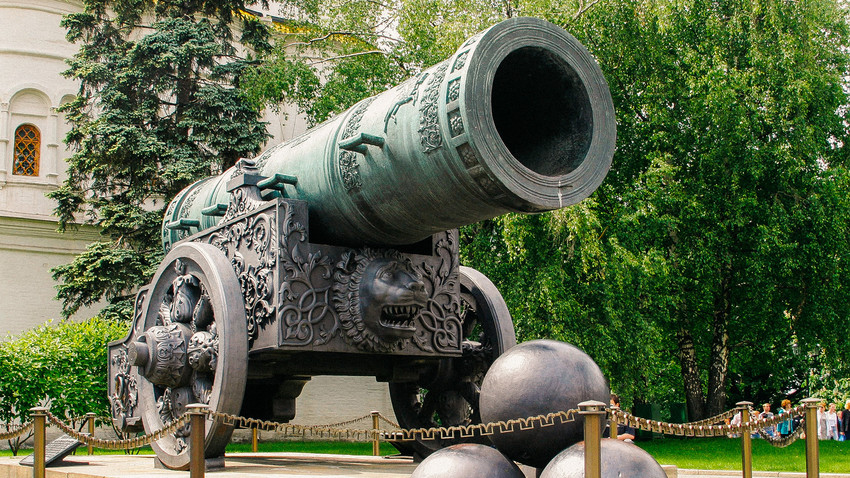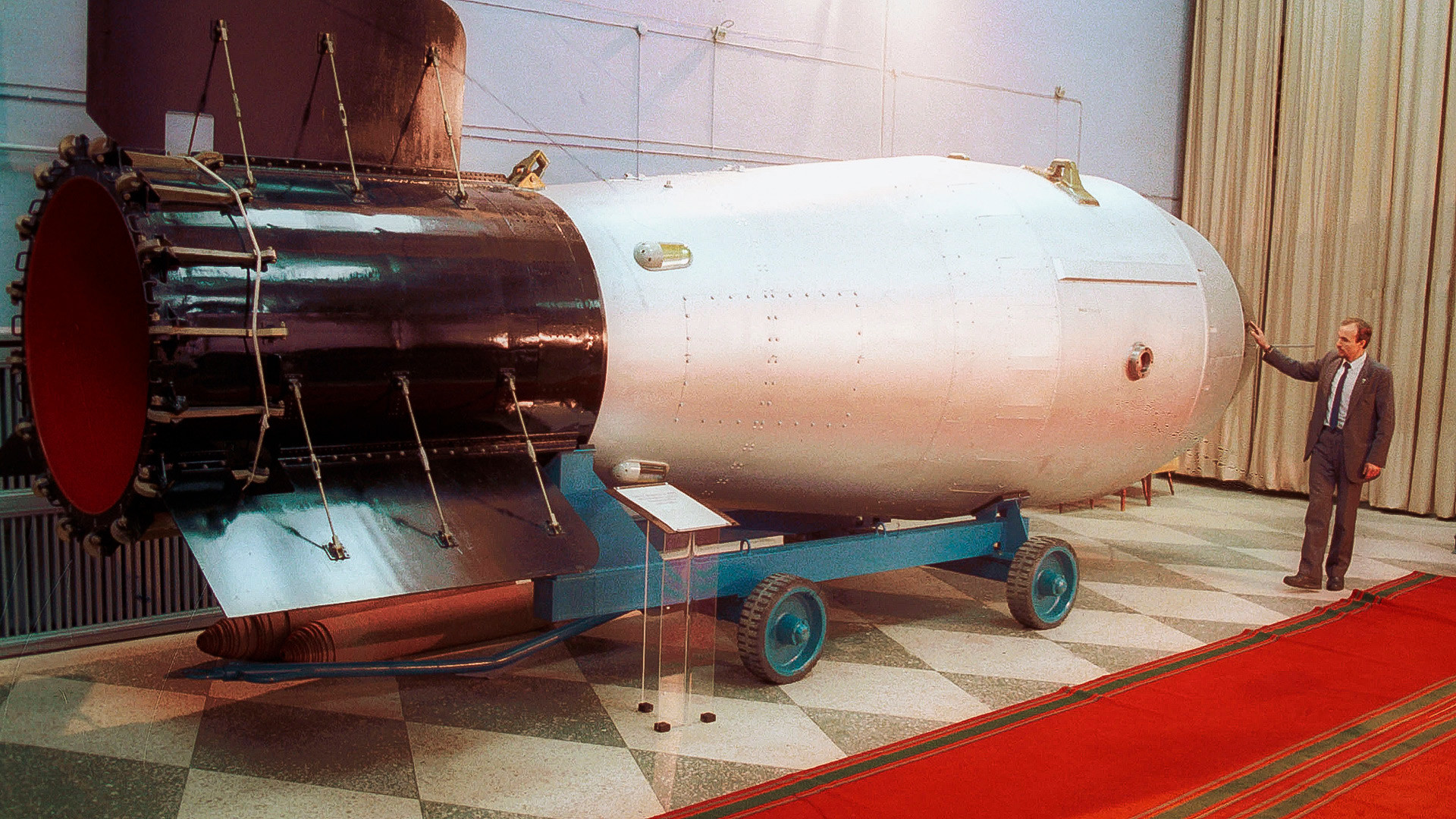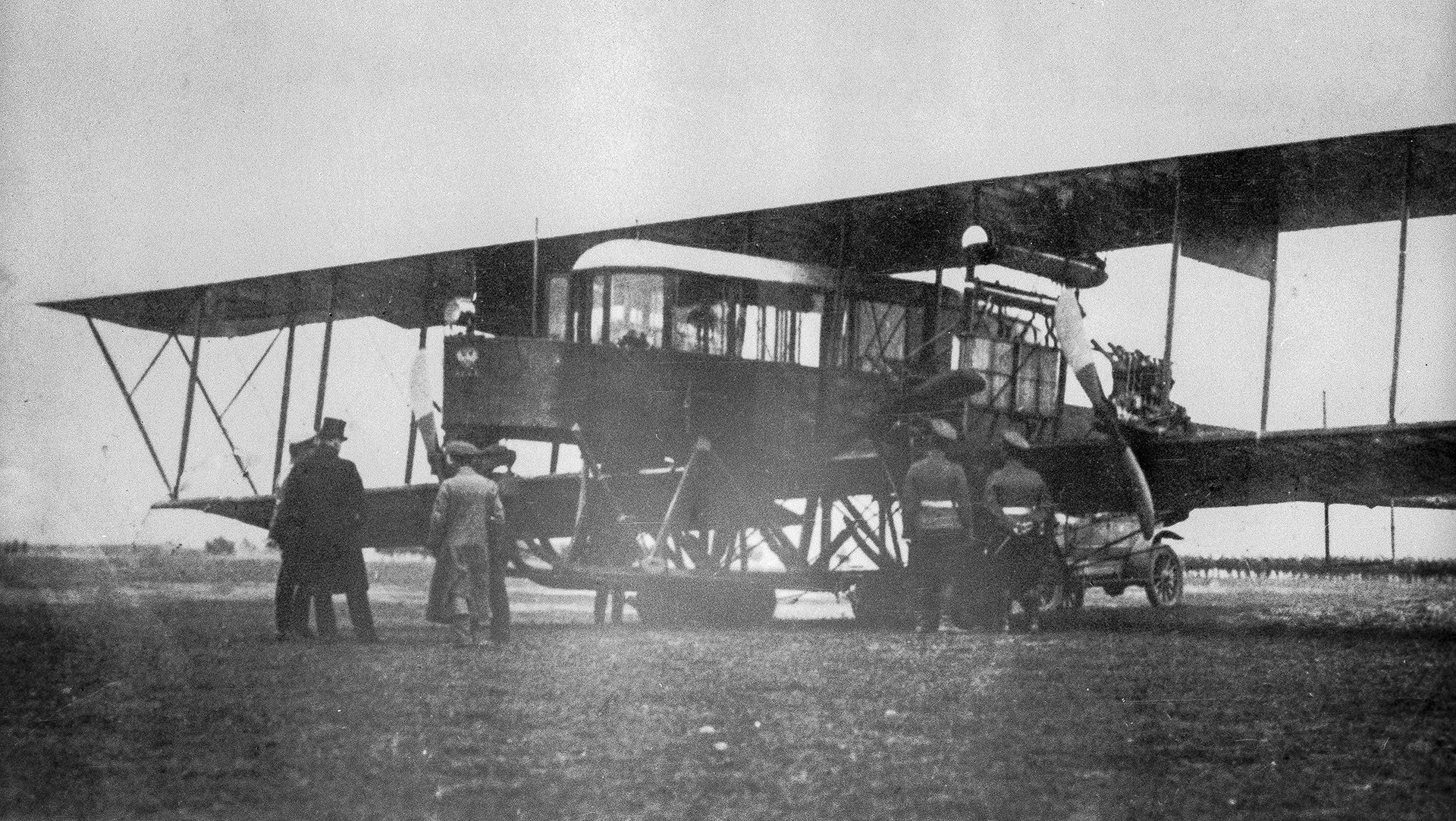The biggest Russian weapons ever created
Tsar Cannon

It was cast from bronze by the cannon and bell maker Andrei Chokhov in 1586, during the reign of the third son of Ivan the Terrible. The gun is 5.34 meters long, with a caliber of 120 cm and a mass of almost 40 metric tons.
We are all accustomed to seeing this gun atop its ornamental lion's head carriage, with cannon balls lying nearby. However, the carriage and cannon balls were made much later, in 1835. Moreover,
Its current nickname is also a later
But according to legend, the cannon did fire one salvo—the ashes of the usurper False Dmitry.
To this day, the cannon stands proud and mighty in the very heart of the Russian capital, a visible sign of Russian military power that no foreign ambassador or tourist can ignore.
Father of All Bombs

In early 2017, the newly sworn-in US President Donald Trump ordered America's most massive bomb, the GBU-43, to be dropped on the heads of militants in Afghanistan. It was known in common parlance as the "Mother of All Bombs." However, Russia's arsenal contains an equivalent: the Aviation Thermobaric Bomb of Increased Power, or more simply the "Father of All Bombs."
In terms of destructive power, Russia's FOAB compares with a nuclear warhead. But unlike the latter, it does not leave behind a radioactive cloud, thanks to the so-called volumetric explosion.
"Warheads of this type, but with a lower yield, have been used in various wars over the past
The nose of the Russian bomb houses a device that when activated sprays explosive agents inside the charge. The "spraying" occurs only after a countdown set by the operator.
"Aerosols are converted into a mixture that is detonated by a
S-21 Russian Knight

In 1913, Russian aeronautical engineer Igor Sikorsky created the S-21 Russky Vityaz (Russian Knight), the first in the list of world's largest aircraft to be built in Russia. The main feature is its four engines positioned in series along the wing. Back then, such design was considered impossible to implement in practice.
Russian Knight was so enormous that reports of test flights were dismissed as a hoax. On Aug. 2, 1913, the aircraft set a world record for flight duration (1 hr 54 min)—the first of many domestic aviation records. Also in 1913, the S-21 served as the basis for the creation of the famous S-22 Ilya Muromets, the world's first
If using any of Russia Beyond's content, partly or in full, always provide an active hyperlink to the original material.
Subscribe
to our newsletter!
Get the week's best stories straight to your inbox